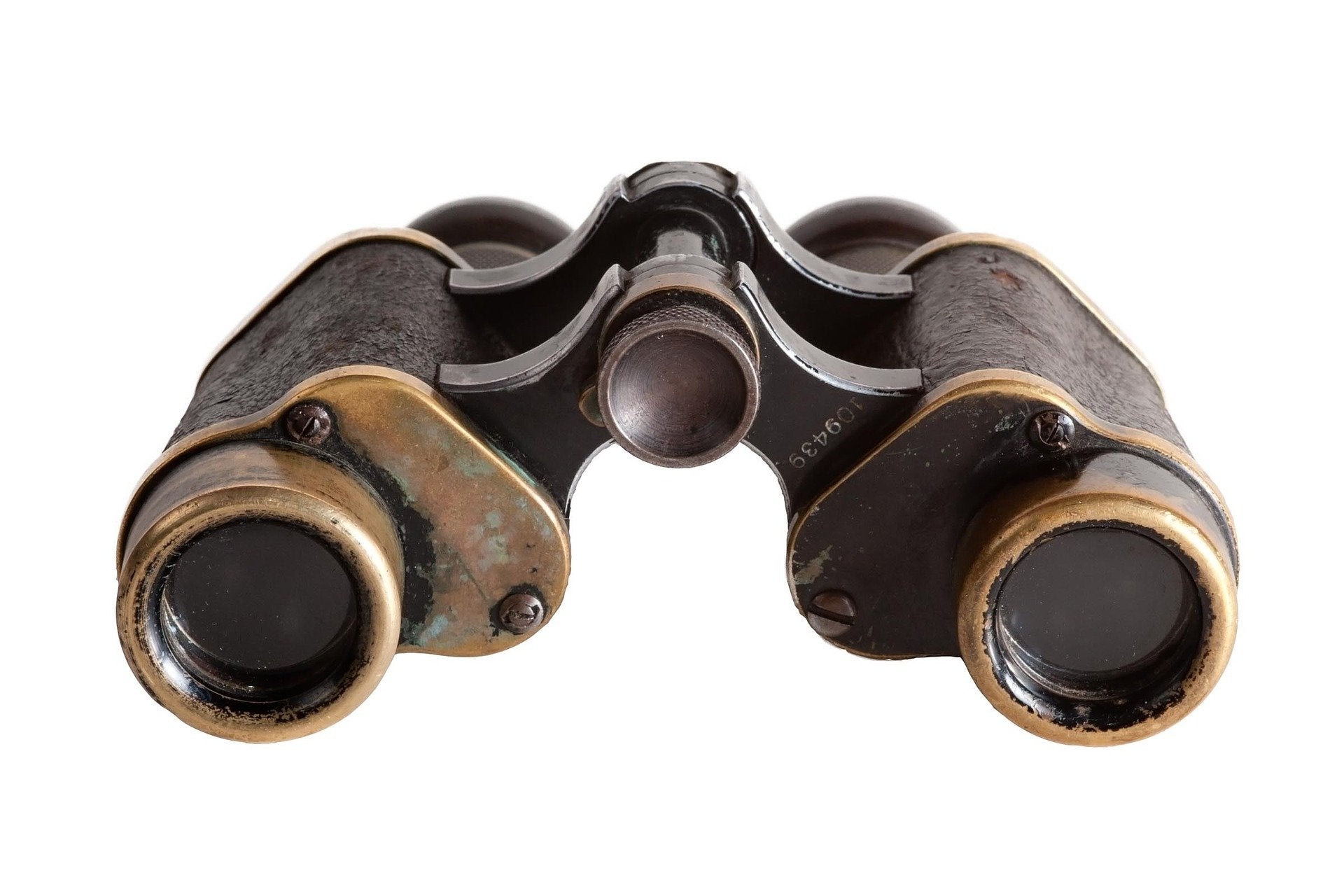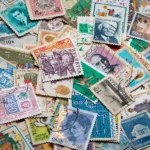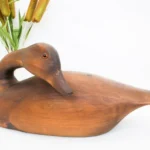
Open Daily 10am - 5pm
12,000sq.ft. of amazing items!
Free and easy parking!

Binoculars. You probably have a set or two laying around the house, maybe for birdwatching or football games. Some two million binoculars are sold each year in the USA, most now made in Asia and not terribly expensive. However, binoculars have a rich history and become an increasingly popular category for collectors. Here are a few things to know.
First of all, let’s review the lingo. A “binocular” is a single instrument while a “pair of binoculars” denotes two. Most people don’t get this right, including me, but now we know.
Binoculars were first invented in France in the 1840s. They started small, primarily as opera glasses, but by the Civil War were being used in battle and larger versions became known as field glasses. Although such instruments were often purchased privately by officers on both side, a few were actually issued and carried either “U.S.” or “C.S.A.” (Confederate States of America) imprints. Watch out for those.
Early versions were little more than two telescopes joined together. A series of lenses created magnification but the addition of prisms around 1900 made for a much better viewing experience. By WWI, binoculars were being widely used although few had a magnification greater than 6x. Short and squat, Bausch & Lomb binoculars with brass prism covers and a distinctive orange leather covering are popular artifacts from that era. Their value is modest (usually around $100) but they were well made and remain useful today.
And that’s one of the most interesting things about binoculars. Unlike any other viewing instrument you can think of, basic binocular design has remain unchanged for 100 years. Indeed, many binoculars made during WWII – and there were dozens of varieties on both sides – are still considered today to be among the best you can buy. Other than optical coatings introduced during the war to aid light transmission and reduce reflection, there has been no other technological advancement of great significance for all that time. When you consider how much cameras, microscopes, and other optical devices have changed, it’s remarkable that binoculars have remained so much the same.
Moreover, unlike many other collectible categories, binoculars have great utility. They are useful in a thousand ways and their portability and general ruggedness allows them to add value to almost any distant situation. If our sense of sight as a information-gathering tool is perhaps the most important to we homo sapiens, something that serves to enhance that sense must be a good thing, right? Right.
Anyway, back to the product itself. If there is a Holy Grail to binocular collectors, it is likely the 8×60 U-boat binoculars used by the German Kriegsmarine during WWII. Made by the two great German optical houses Leitz (Leica) and Zeiss, these large and heavy glasses provided an enormous advantage to German “Wolfpacks” (groupings of U-boats) during the early war in the Atlantic. Their field of view is dazzling and their clarity near edge to edge. Today such binoculars are worth thousands of dollars and catnip to any serious collector.
On the American side, the US Navy Mk 42 made by Sard was for anti-submarine patrols and has gained a devoted following. Its 6x magnification was not particularly remarkable but the giant optical elements (both prisms and lenses) used in construction created a field of view that was simply extraordinary. For anyone putting one of these monsters up to their eyes for the first time, the response is invariably the same: “Wow!”. There is simply nothing comparable made today, and good examples can still be found in the $600-$800 range.
In fact, most collector interest revolves around optics from WWII, both Allied and Axis. American and British glasses were made in a range of sizes and magnifications, all the way up to giant 20×120 pedestal-mounted units found on the bridge of battleships and destroyers. The British introduced all manner of binoculars, none with particularly fine optics but many with quirky designs. Although most have disappeared into collections, some can still be found along London’s Portobello Road and occasionally online. As precision instruments go they can be quite reasonable, often less than the cost of reproducing them today. Counterfeits have not been a big problem in this category either, eliminating some of the usual hazards of collecting.
So don’t be too quick to put Grampa’s binoculars out at your next garage sale. They may be worth more than you think.





We’ll email you about the latest events, sales, and general store updates.

Our antique gallery is located just south of downtown Palm Springs, with free parking and air conditioning throughout.
Open Daily: 10am – 5pm
505 E Industrial Pl.
Palm Springs, CA 92264
© Copyright Antique Galleries of Palm Springs 2024